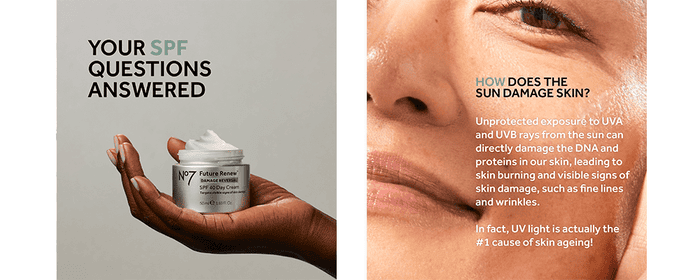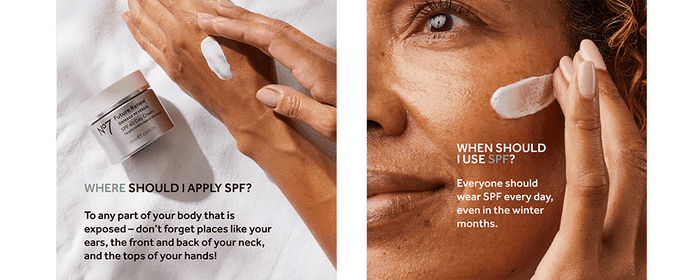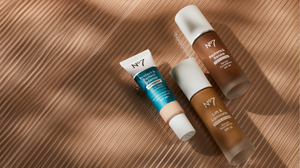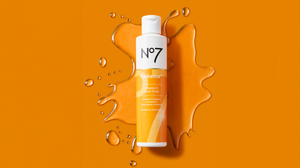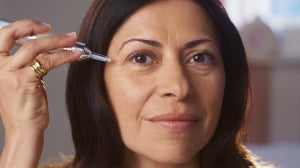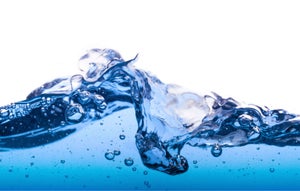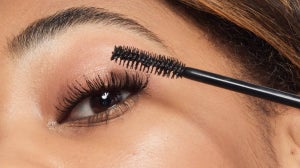
Protecting yourself from the dangerous effects of sun exposure has never been easier. Long gone are those childhood beach days where sunscreen meant a greasy sheen, sand sticking to us from head to toe, and an unshakeable tint of chalky white. Today, it’s all about multi-purpose power, with SPF benefits folded into everything from makeup to moisturiser.
But with the vast plethora of options for sun protection available come more and more questions – and that’s where we step in to make things a little easier for you. Want to know how much SPF you should be applying? Heard people talking about using sunscreen indoors and been left perplexed? Wondering when your SPF products will expire? You’ve come to the right place…
What are UV rays?
UV radiation is naturally produced by the Sun, an invisible form of energy that reaches through space to penetrate our atmosphere, where it’s able to cause harm to living tissue.
Two main forms of UV radiation impact our skin health, with exposure to both damaging the DNA within our skin cells and increasing our risk of skin cancer. UVA rays make up 95% of UV radiation on Earth, penetrating deep into the skin to cause longer-term damage such as premature signs of skin ageing, while UVB rays are more commonly associated with immediate short-term damage such as sunburn. It’s important to shop for a broad-spectrum sunscreen that will help protect you from the effects of both.
What’s the difference between chemical and mineral sunscreen?
There are two kinds of sunscreen to choose between – chemical (using organic filters) and mineral (using inorganic filters), with the difference between them resting in the technique they use to filter out harmful UV radiation.
Chemical sunscreens contain (you guessed it) chemical SPF ingredients like Octocrylene and Ethylhexyl methoxycinnimate which absorb into your skin and in turn absorb UV rays before they penetrate your epidermis, converting them to heat and dissipating them. Mineral sunscreens differ by creating a direct physical block for radiation, using ingredients like titanium dioxide and zinc oxide which sit atop your skin and reflect off any UV rays.
How often should I apply SPF?
Every day of the year, come rain or shine! Yes, even when the sun has decided to go into hibernation, as skin-damaging UV rays can break through cloud cover on the greyest of days.
To ensure your skin has maximum protection, apply your sunscreen 10-15 minutes before going outside to allow it to dry, and be sure to bring your sunscreen on the go with you to top up every 2 hours. If it’s a day where you’re being extremely active and sweating, or taking part in any water-based activities like swimming or surfing, we recommend reapplying more often.
Which factor SPF should I use?
In terms of protecting the skin the higher the SPF number the longer your skin is protected from the burning effects of the sun. For example, if you would normally burn in ten minutes without sunscreen, SPF 30 would protect your skin for up to 300 minutes (when reapplied as directed). However in this example, if you are going to be out for longer than 300 minutes you would still burn and a higher SPF number should have been selected. As we don’t usually know our natural burning time and this varies throughout the day, seasons, and location in the world The higher the better, so when in doubt, opt for a minimum of SPF30 or with fair, sensitive skin use SPF 50- skin still becomes damaged before it shows signs of sunburn and this damage builds up over our lifetime so it's important to protect our skin today for great skin tomorrow!
Remember SPF is only half the story and we also need to be considering protection not just from sunburn but more serious longer-term damage that can be caused by UVA light. Look for the level of UVA protection offered by the product. Often this is indicated by a star rating symbol with Five star UVA protection the highest available protection.
How much SPF should I apply?
Whichever factor you opt for, you need to ensure you’re using plenty of SPF in order to really achieve that desired sun protection. If you’re haunted by memories of being lathered in sunscreen before a day out, don’t worry – the equivalent of half a teaspoon (on average, that’s two finger lengths) should suffice for your face and neck. It takes 2-3 tablespoons of sunscreen to cover your whole body (a shot glass full) one teaspoon for each arm and two for each leg for example to make it simpler
Learn how much SPF you should use on your face compared to the size of your palm below:
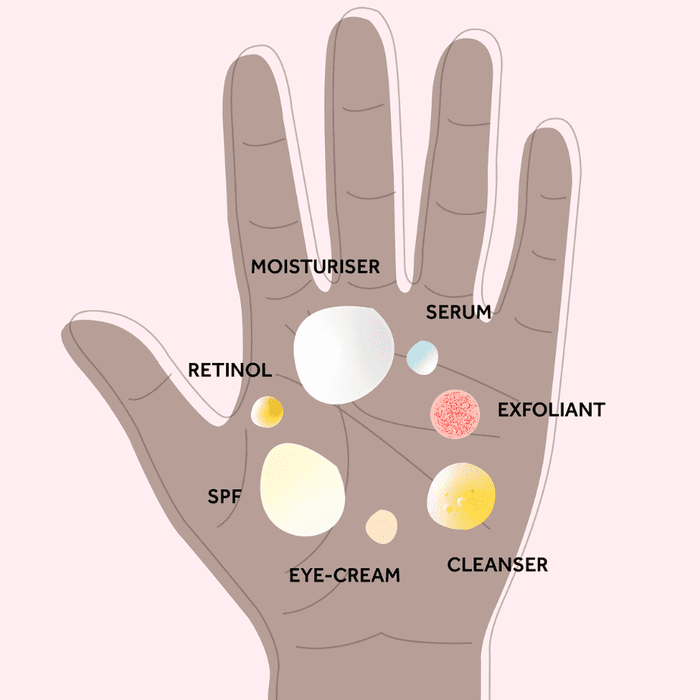
Will daily SPF use cause breakouts?
If you’ve found that one sunscreen has caused your skin to flare up, that doesn’t mean there’s no hope for you to find your SPF match – it’s simply a case of playing skincare detective and finding the broad-spectrum protection that works for you. We would suggest shopping for non-comedogenic, options that won’t cause clogging and also remember that sun exposure itself will trigger breakouts and damaged skin.
Do I need to apply SPF when I’m indoors?
UVA rays are powerful enough to penetrate through glass windows, so if sitting near a window whether at home in the car, or working indoors, it's advisable to protect skin. Also, we forget the times we nip outside quickly to buy a sandwich or pop into the garden and applying our day cream in the morning can cover these incidental sun exposures. If spending a longer period outside always apply a sun protection product or reapply your chosen day cream
Does sunscreen expire?
All good things must come to an end, and sadly sunscreen is no exception. The good news? This trusty essential can be relied upon for a long time before you have to worry about putting it out to pasture, as most sunscreens have a shelf life of 2 – 3 years.
You should be able to find its eventual expiration date labelled on the packaging, but if there isn’t one present, make a note of when you originally bought the product and dispose of it after 3 years – or when you see the tell-tale signs that it’s seen better days. More on those in the next question…
How can you tell if a sunscreen has expired?
An instant giveaway will be a change in any of the following;
Scent – this could mean anything from noticing an unpleasant odour to merely detecting a shift in the smell you’re accustomed to from your sunscreen.
Consistency – you may start to see a change in the texture of your sunscreen as it becomes watery or lumpy.
Colouring – any shift in colour is a sure sign that it’s time to throw your sunscreen away.
How long can you keep sunscreen once opened?
Officially, you should be able to use your sunscreen up until its expiration date, even if you begin using it at the start of its 3 years of effectiveness – but this can vary depending on how it’s stored, as factors such as heat and moisture can have an impact on the speed at which it degrades.
To help keep yours in tip-top condition, aim to keep it out of direct sunlight, store it in a cool, dry place and if you’re taking it on the go, wrap it in a fresh, clean towel.
